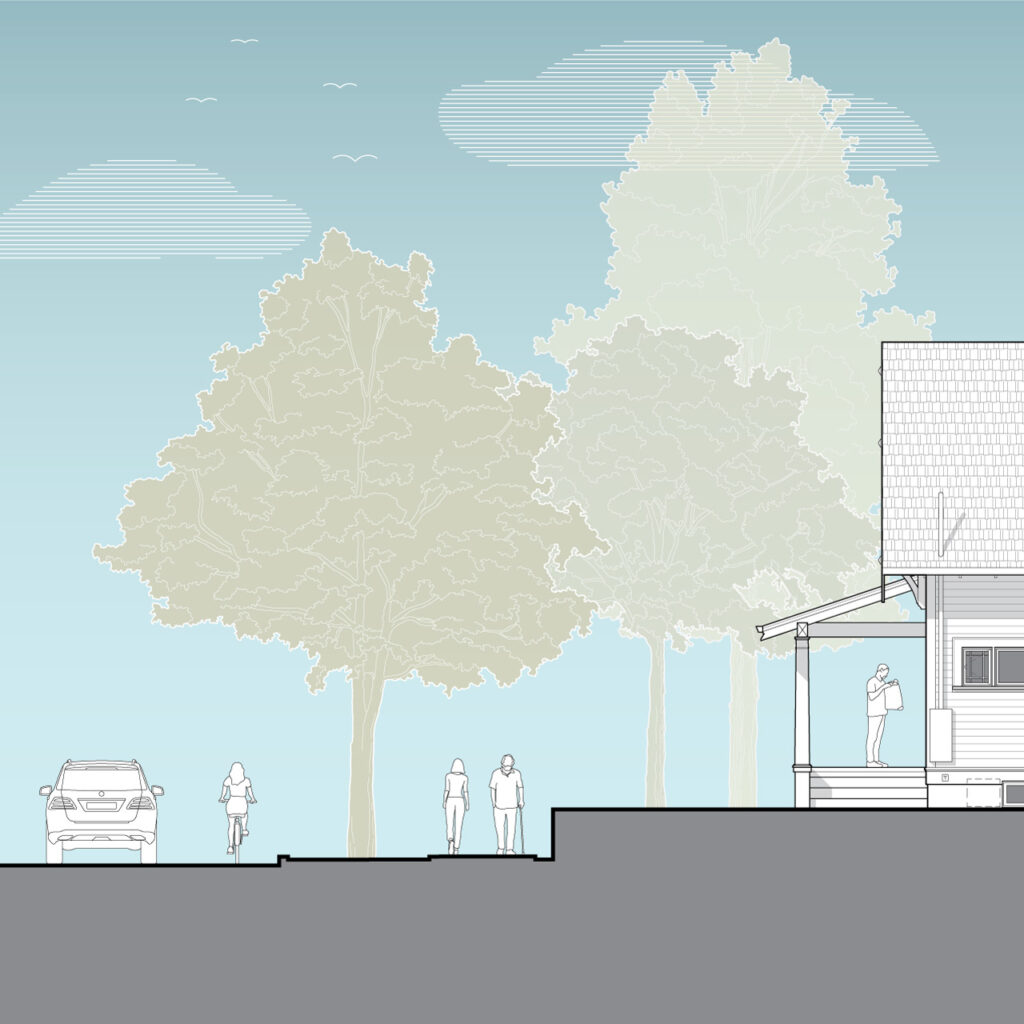
We love it when clients come to us with questions, looking for property advice long after our project work is complete. Our Alameda Craftsman homeowners noticed a steady deterioration of their sidewalks and parking strips, including a raised edge becoming a tripping hazard. They wanted to know—What should we do?
When you buy a home or business, you focus on your property lines, including the structures and the available outdoor space, but there are other areas and details to consider–areas you may not realize you are responsible for. Sidewalks and parking strips, for example, fall into an often overlooked is-it-really-my-responsibility category. So, what do you need to know about sidewalks and parking strips in the City of Portland?
Sidewalks and parking strips tutorial
Let’s start with the basics. Here is a brief vocabulary lesson, including a diagram, to illustrate this property lingo.
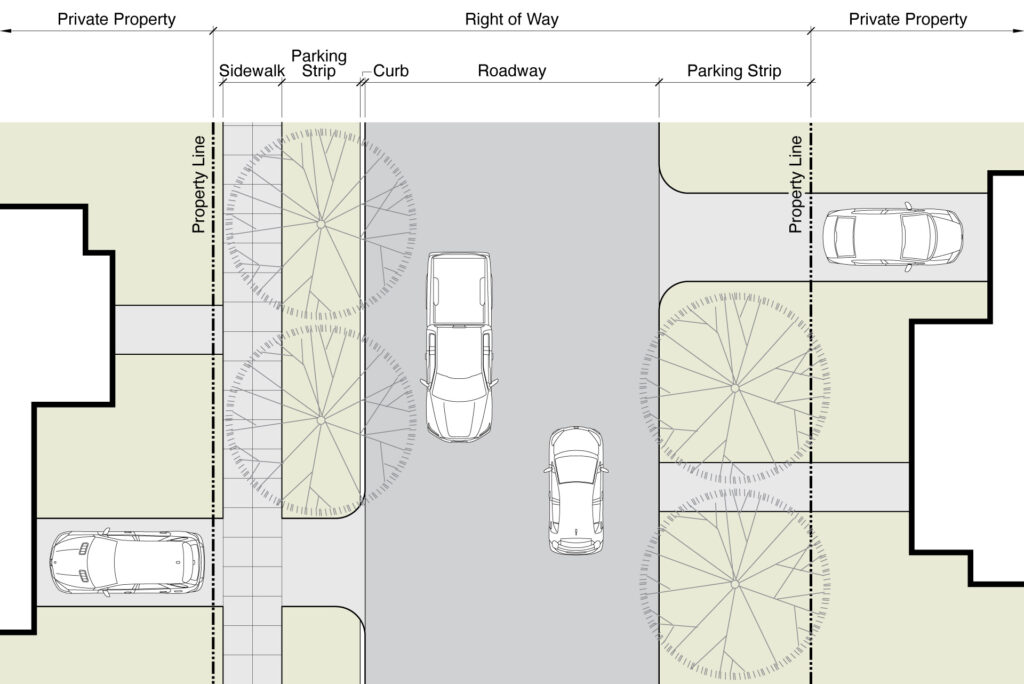
Right of Way
A jurisdiction’s right of way (ROW) is an easement for public travel. It encompasses the total area that supports travel—the passage of people or goods by foot, bike, or vehicle. This includes all streets and freeways as well as pedestrian connections and alleys.
Roadway
A roadway, also known as a street, is the portion of a right of way that supports vehicle movement. Streets are city-owned and it is the responsibility of the city to maintain them.
Curb
A curb is a separation between the area dedicated to vehicle traffic (roadway) and the area dedicated to pedestrians and non-motor vehicle traffic. Typically, curbs are six inches high. Keep in mind, some neighborhoods don’t have curbs. Like the roadway, curbs are city-owned. They are also usually city-maintained.
Sidewalk
A sidewalk is a portion of the right of way intended for pedestrian use. Often in residential areas, the sidewalk does not abut private property. The right of way extends beyond the sidewalk to the private property line (see the left side of the diagram above). This is usually 12-24 inches wide. However, some neighborhoods do not have sidewalks. Sidewalks are city-owned, but maintenance is the responsibility of the adjacent property owner.
Parking Strip
A parking strip, sometimes referred to as a planting strip, is the area between the curb or edge of the roadway and the property line. These are non-paved areas ranging in width from two feet to over eight feet. Parking strips, like sidewalks, are city-owned, but property owner-maintained.
Property Line
A property line is the boundary line showing where city-owned property stops and privately-owned property starts.
Who is responsible for what?
Property owners in the City of Portland are responsible for “constructing, reconstructing, maintaining, and repairing the sidewalks, curbs, driveways, and parking strips abutting or immediately adjacent to their property line.” Likewise, as property owners, you are liable for any injuries that occur in those defined areas. So, our client who is concerned about the sidewalk becoming a tripping hazard has a reason to be concerned.
Curbs are usually maintained by the city, except in situations where damage occurs in combination with the sidewalk, such as the case of damage caused by tree roots.
Some properties have a city-owned stormwater facility in their parking strip. The city will plant and maintain these stormwater facilities, but property owners are responsible for the area around them.
Maintaining your sidewalk
Chapter 17.28 of the Portland City Code states that property owners must keep sidewalks in good repair. They need to be free of tripping and other safety hazards for pedestrians and people in wheelchairs.
From time to time, Transportation Bureau inspectors assess sidewalks and issue property owners with a Notice to Repair Sidewalk. Or, don’t be surprised if you receive a Notice to Repair because someone complained to the city about your sidewalk.
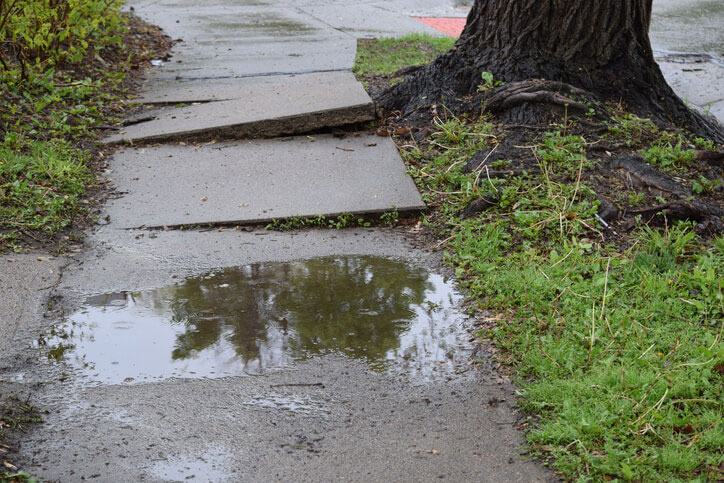
To help guide you, here are a few hazards that could be cited for repair:
- A vertical step separation equal to or greater than 1/2 inch.
- Openings or cracks in the sidewalk equal or greater than 1/2 inch.
- Sidewalk surfaces chipped or deteriorated to a depth equal or greater than 1/2 inch.
If you receive a Notice to Repair, you have 60 days to fix the sidewalk yourself (or hire a contractor to do it). You or your contractor must comply with city standards, which includes obtaining a permit.
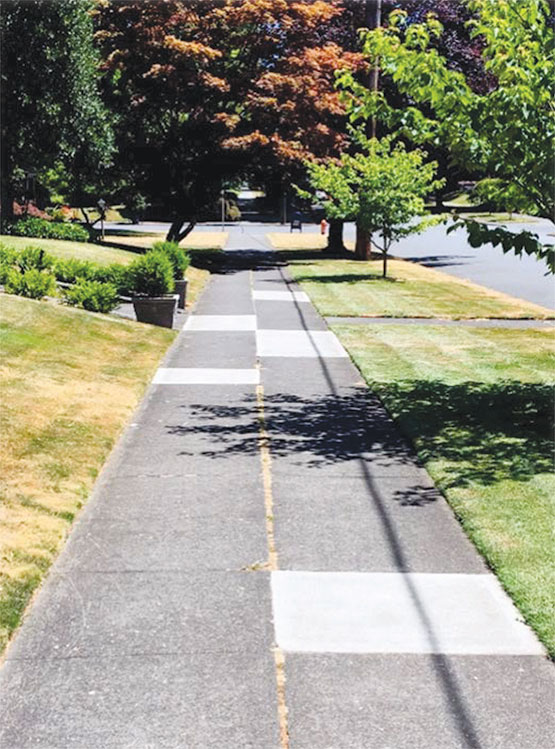
If you ignore the notice, the city will repair the sidewalk with their own crews and send you the bill. Furthermore, they will assess it against your property. Typically, this is much more expensive than hiring your own contractor.
You can also proactively repair the sidewalk yourself before you’re issued a notice. Again, you must obtain a permit and comply with city standards.
Maintaining your parking strip
Regulations are pretty relaxed about what you can and cannot plant in parking strips (aside from trees – see below). But be mindful of the following guidelines:
- Plants cannot grow over the sidewalk or street.
- Tree limbs must be a minimum of 7.5 feet above the sidewalk and 11 feet above the street. If someone complains, you can be issued a notice to prune them.
- Inspections are done on a case-by-case basis and only if the city gets a complaint.
Safety and visibility are the primary considerations when planting in a parking strip. The city wants to avoid situations where you can’t get out of a car or can’t see kids on the sidewalk when you back out of a driveway. Make sure to create clear paths for people to walk from the street to the sidewalk. Don’t impede the visibility of stop signs or add tall plants within 25 feet of a street corner.
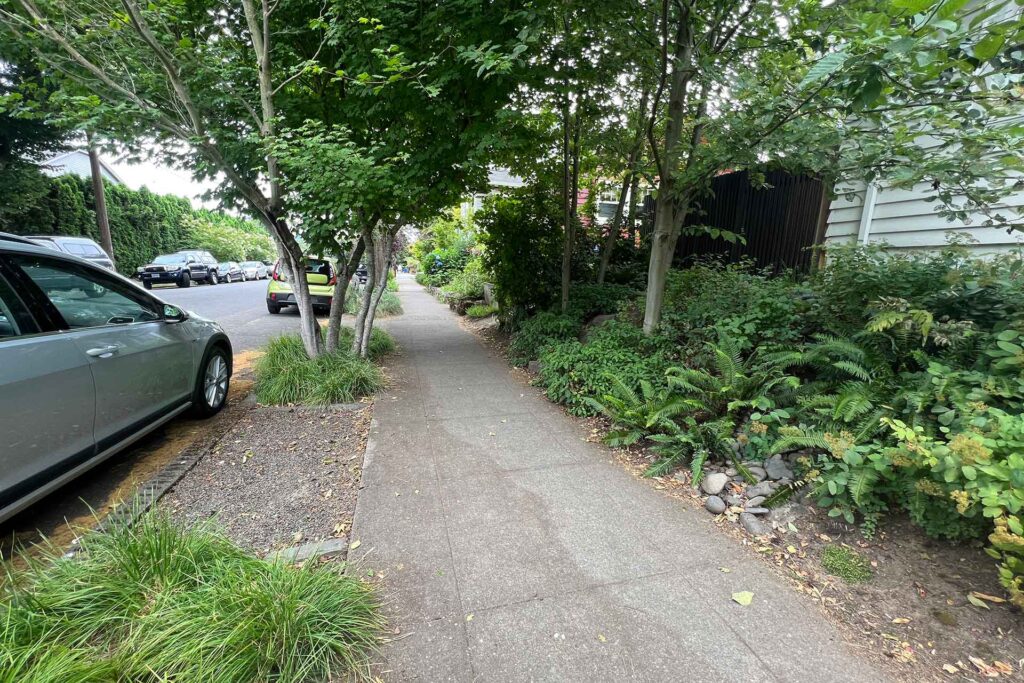
When deciding what to plant, use common sense and think about it from a driver’s and pedestrian’s perspective.
Parking strip tree rules
Yes, you can plant trees. BUT, the city regulates the location(s), type(s), and size(s). And, of course, you need a permit. The permit is free and includes an on-site inspection. You also need a permit to prune or remove a street tree.
After you apply for your permit, an Urban Forestry Tree inspector visits your property and physically locates where you can plant trees. The inspector verifies the tree you choose is the “right tree for the right place” and answers any questions. This ensures the tree provides the maximum benefit for you and the neighborhood, and requires minimal maintenance.
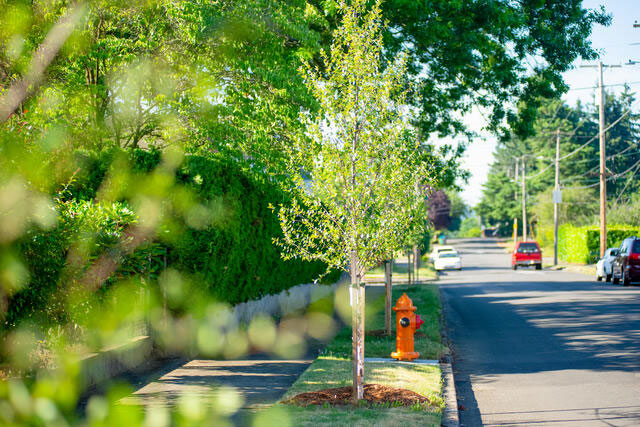
You will receive a planting list relevant to the size of your parking strip. It is best to choose your tree species from that list. If you want to plant a tree that is not on the list, you can, but you will need approval from your inspector.
Planting a tree appropriate for the size of your parking strip helps prevent it from damaging the sidewalk in the future. Proper selection also ensures the tree doesn’t make a mess. Trees with fruit and seeds are no-nos in parking strips.
Find all things tree at the City of PDX Urban Forestry website, including regulations, permits, and FAQs.
Friends of Trees
Want to plant a tree in a parking strip with less of a hassle? Ask a friend for help. Contact Friends of Trees. This group has organized the process and will:
- Work with the city to determine which tree is the right tree for your home.
- Obtain your permit.
- Give you a list of trees to pick from.
- Purchase the tree. They buy from wholesale nurseries throughout the region to get you the best possible selection and price.
- Plant your tree at the annual community-supported, volunteer event for your neighborhood.
- You can help plant if you want!
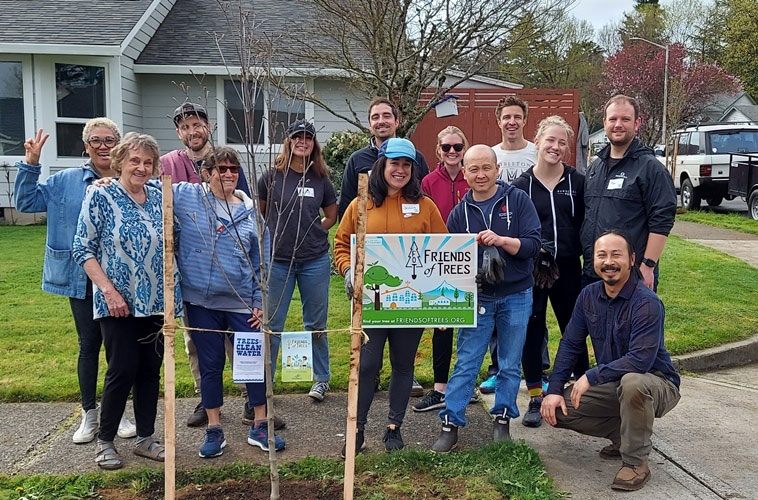
Parking strip trees in development situations
When you remodel your home (or build a new one), there is one more tree rule to consider. For projects valued greater than $25k, pulling a permit for construction triggers a street tree review. If you already have trees in your parking strip, nothing happens. If you don’t, you are required to plant some. The process is similar to the parking strip tree rules above. First, an inspector will come to your site and mark the locations for the trees. Then, they will give you the pre-approved tree list. You cannot close out your permit until the trees are planted.
Last but not least…water meters
Do you know where your water meter box is? Usually, it’s in your parking strip. It is a concrete box flush to the ground where you turn off the water supply to your building.
Is your landscape hiding it from plain sight? Property owners are responsible for keeping the water meter box accessible to meter readers. If it isn’t, the Water Bureau will issue a service order to have a gardening crew clear the area. And they won’t follow your landscape design. Instead of a trim, it will be a crew cut. Our advice is to keep plantings low and clear around the meter.
Pay attention to your sidewalks and parking strips
According to Dorothy Bothwell of Bothwell Landscape Studio, extending your planting into the parking strip creates more perceived useable property. In addition, it provides a nice buffer from the street. This space is an extension of your home and property – it enhances curb appeal and makes a great first impression. Think about it, this area is the first thing anyone sees when they drive by or walk up to your home. It is a little extra detail to be proud of.
Want to learn more about ways to perk up your parking strip curb appeal? Stay tuned for our Parking Strip Landscape Tips Q&A with Bothwell Landscape Studio.
